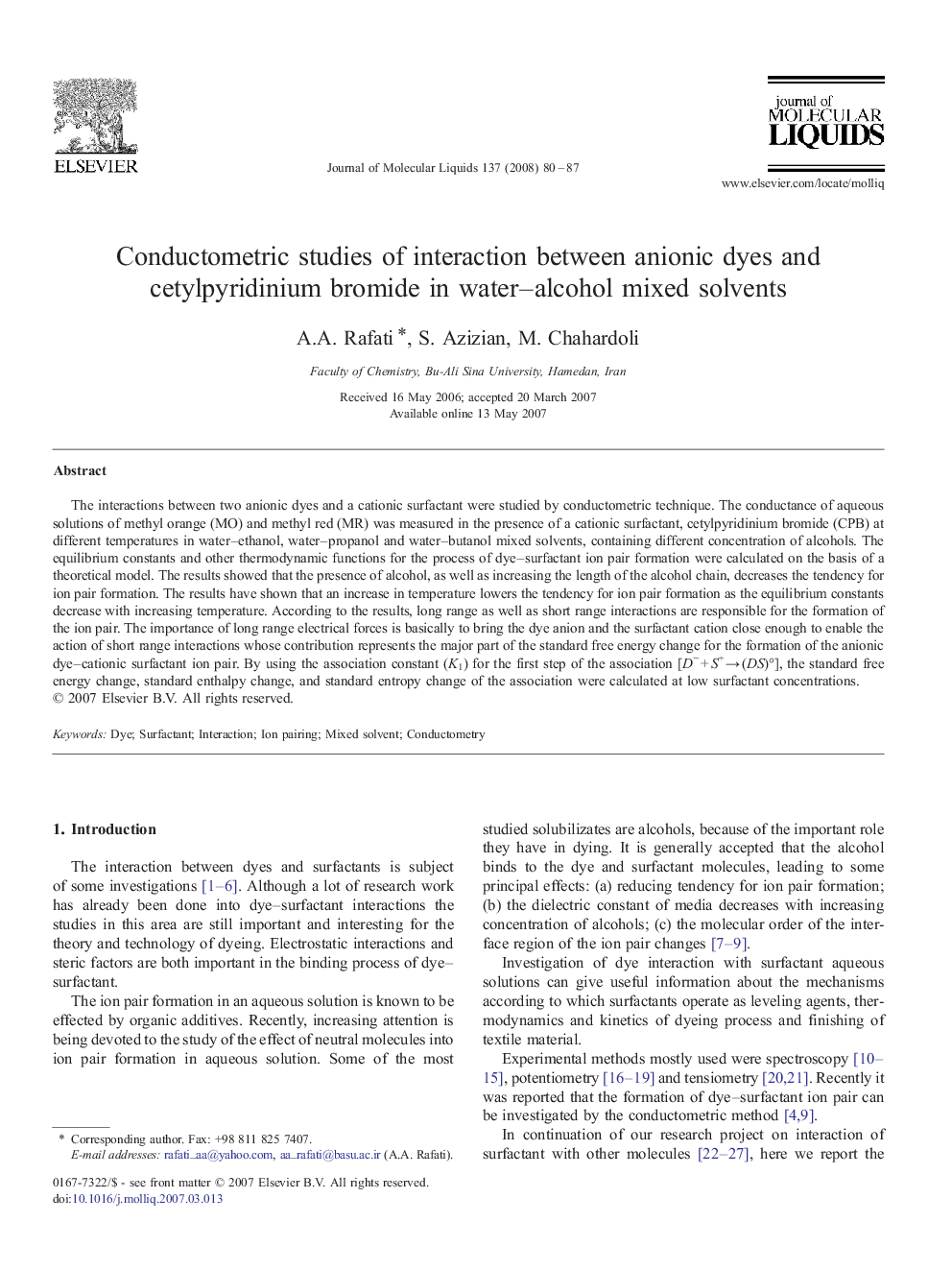| Article ID | Journal | Published Year | Pages | File Type |
|---|---|---|---|---|
| 5413576 | Journal of Molecular Liquids | 2008 | 8 Pages |
Abstract
The interactions between two anionic dyes and a cationic surfactant were studied by conductometric technique. The conductance of aqueous solutions of methyl orange (MO) and methyl red (MR) was measured in the presence of a cationic surfactant, cetylpyridinium bromide (CPB) at different temperatures in water-ethanol, water-propanol and water-butanol mixed solvents, containing different concentration of alcohols. The equilibrium constants and other thermodynamic functions for the process of dye-surfactant ion pair formation were calculated on the basis of a theoretical model. The results showed that the presence of alcohol, as well as increasing the length of the alcohol chain, decreases the tendency for ion pair formation. The results have shown that an increase in temperature lowers the tendency for ion pair formation as the equilibrium constants decrease with increasing temperature. According to the results, long range as well as short range interactions are responsible for the formation of the ion pair. The importance of long range electrical forces is basically to bring the dye anion and the surfactant cation close enough to enable the action of short range interactions whose contribution represents the major part of the standard free energy change for the formation of the anionic dye-cationic surfactant ion pair. By using the association constant (K1) for the first step of the association [Dâ + S+ â (DS)°], the standard free energy change, standard enthalpy change, and standard entropy change of the association were calculated at low surfactant concentrations.
Related Topics
Physical Sciences and Engineering
Chemistry
Physical and Theoretical Chemistry
Authors
A.A. Rafati, S. Azizian, M. Chahardoli,
